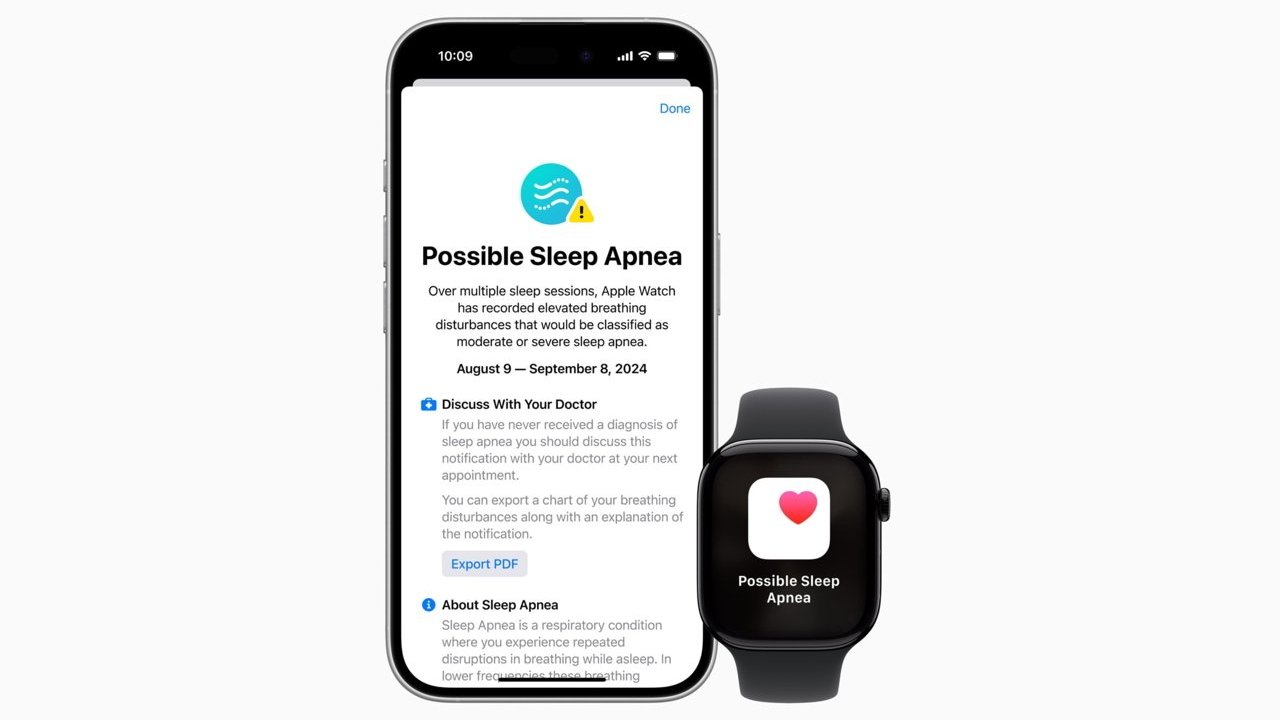Following FDA approval, Apple will shortly launch its sleep apnea detection feature for the Apple Watch, and has now published a health paper detailing its development and verification.
Announced as one of Apple’s major new health features — alongside hearing health — at the “It’s Glowtime” event, Apple Watch sleep apnea detection required FDA approval. The Food and Drug Administration has now granted approval, and the feature will be rolling out to at least the US presently. Apple has now also released a 10-page report on the feature, called “Estimating Breathing Disturbances and Sleep Apnea Risk from Apple Watch.”
The document is not attributed to any authors, but otherwise is a regular academic filing on how the feature works. It also specifically details how Apple’s research was validated by the wider health community.
“Apple developed the Apple Watch algorithm,” says the full report, “which uses accelerometer data to estimate Breathing Disturbances, with a large and diverse training set of adults undergoing simultaneous recordings from Apple Watch and a ground truth reference.”
“This included either in-lab polysomnography (PSG) or home sleep apnea test (HSAT) kits, which measure apnea and hypopnea events — the foundation of the apnea-hypopnea index (AHI),” it continues.
“Apple Watch tracks movement with triaxial accelerometer signals, which capture coarse motion of the body as well as fine movements including motion associated with breathing,” says the paper. “Apple developed an algorithm that uses the accelerometer time series data to classify Breathing Disturbances that occur during sleep tracking, which are temporary interruptions in the breathing pattern.”
During development, Apple says it conducted research studies using a diverse population. There were 3,936 nights where 2,160 participants tested either at home or in a sleep laboratory. There was then an additional 7,220 nights further testing with 2,542 volunteers.
“Certified PSG technologists scored the clinical recordings according to American Academy of Sleep Medicine (AASM) standards to provide reference labels of each apnea and hypopnea event,” says Apple. “It’s important to note that current AASM clinical standards allow multiple definitions for scoring sleep apnea events… both the training and validation studies used the strictest scoring definition, which requires a 4% oxygen desaturation for hypopneas.”





